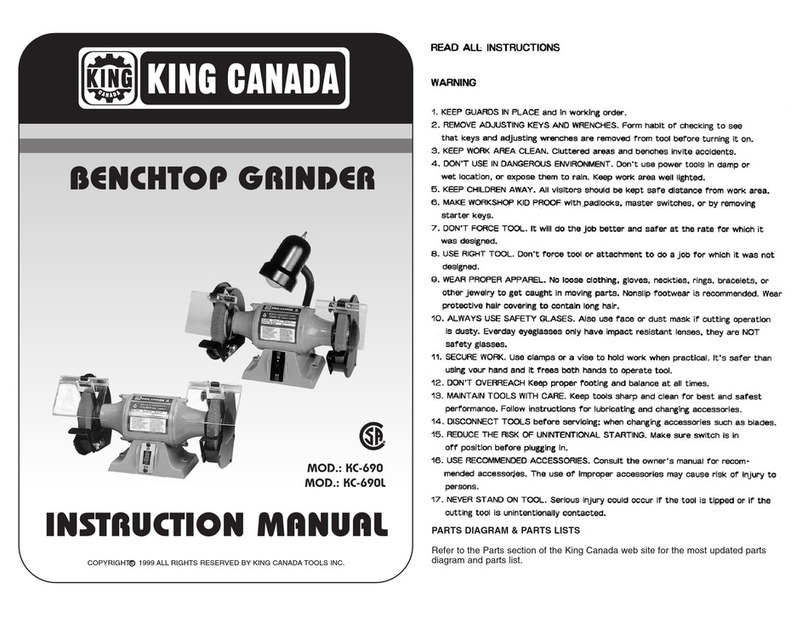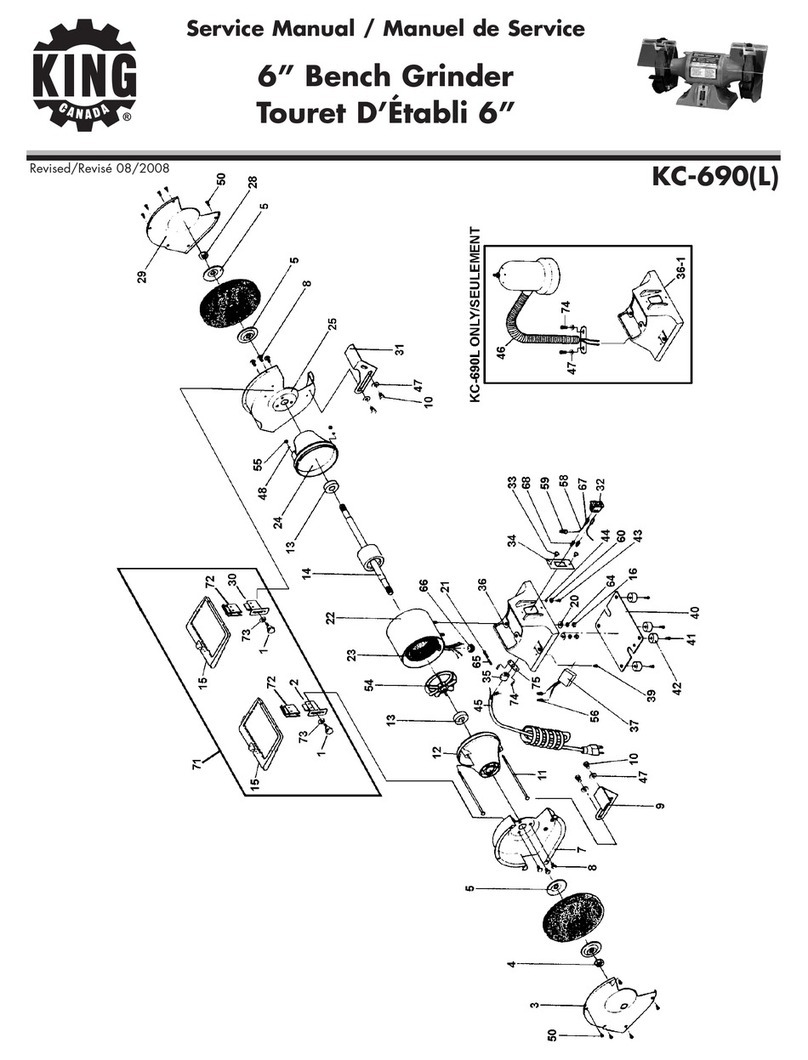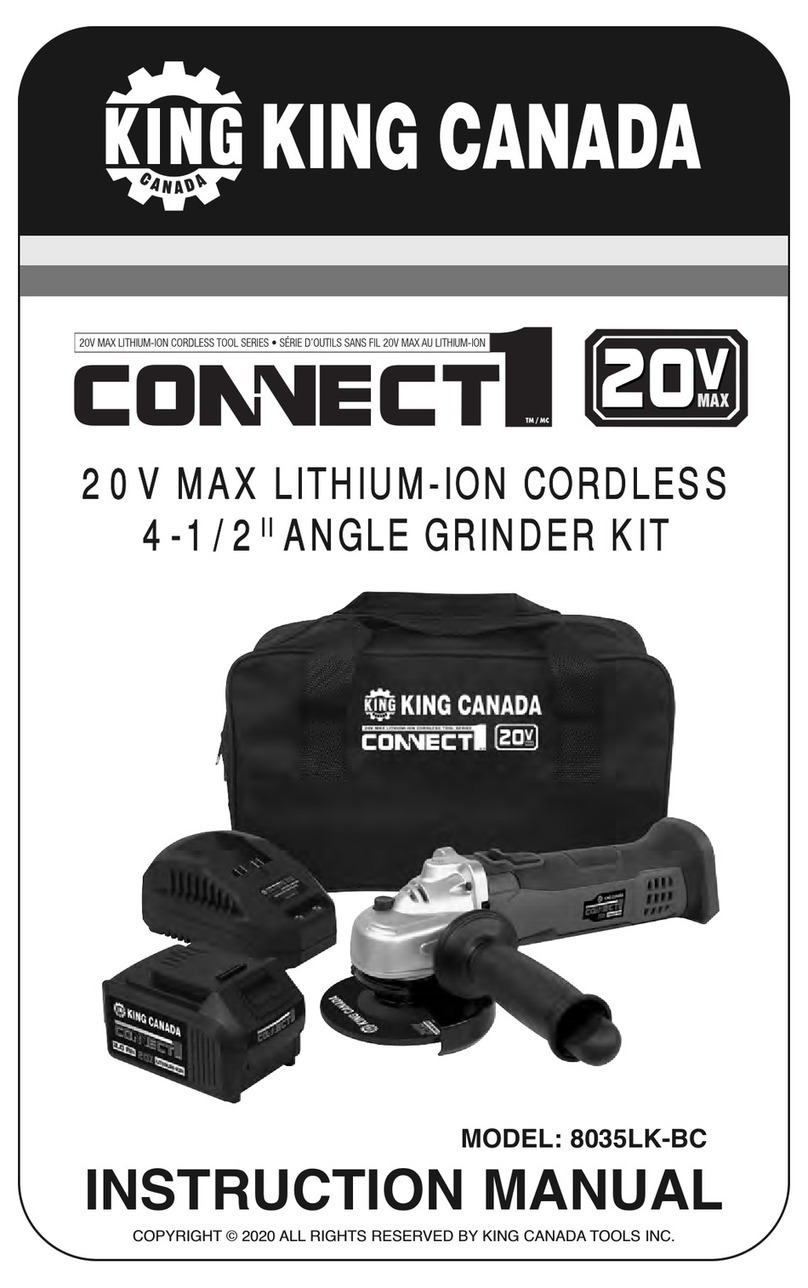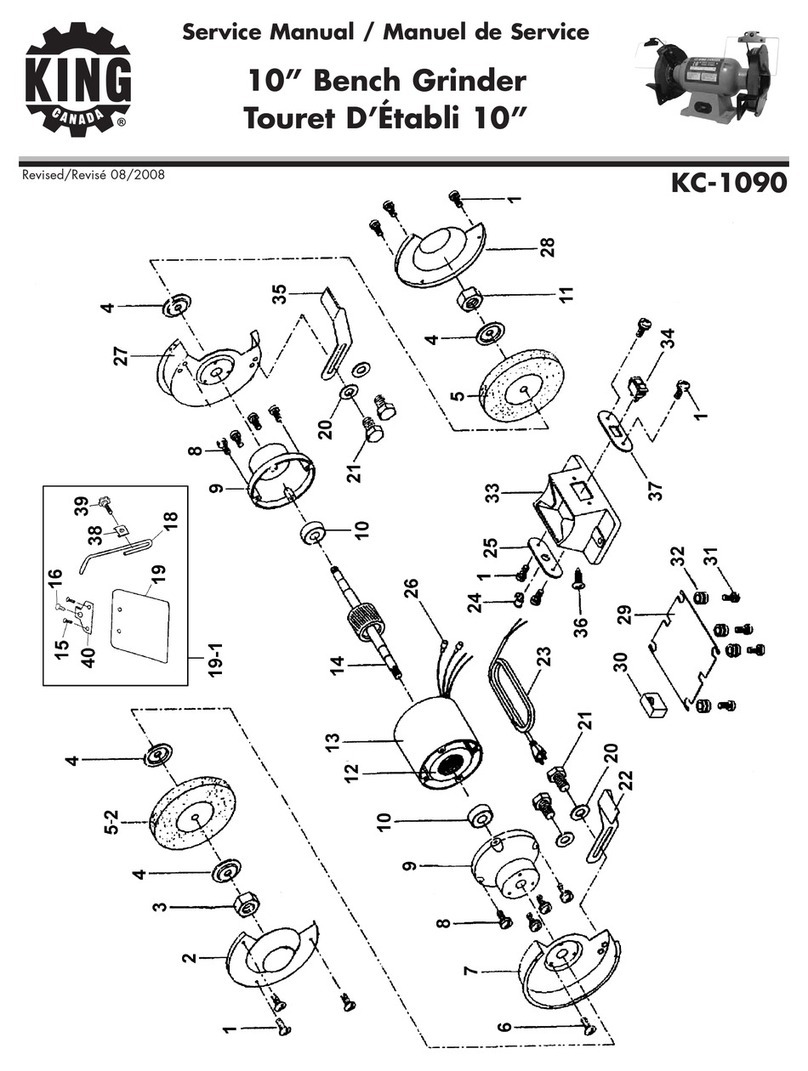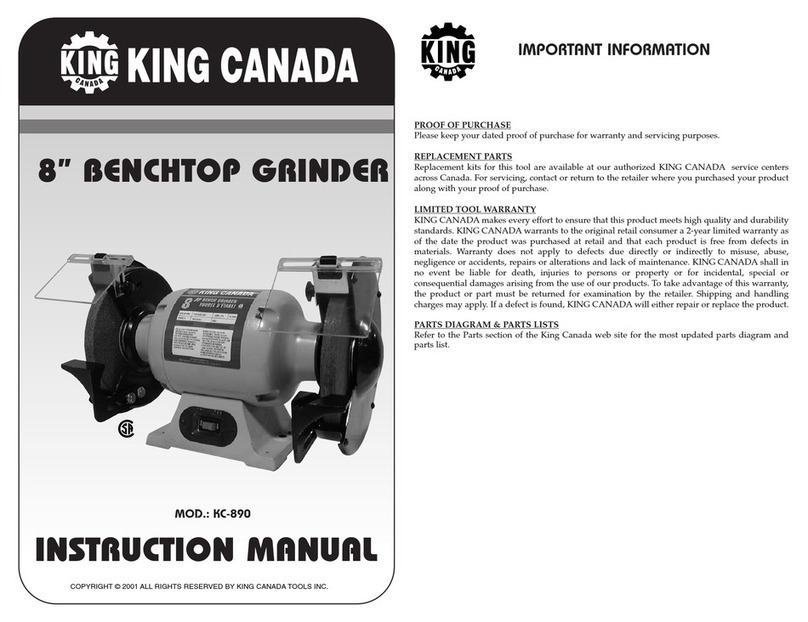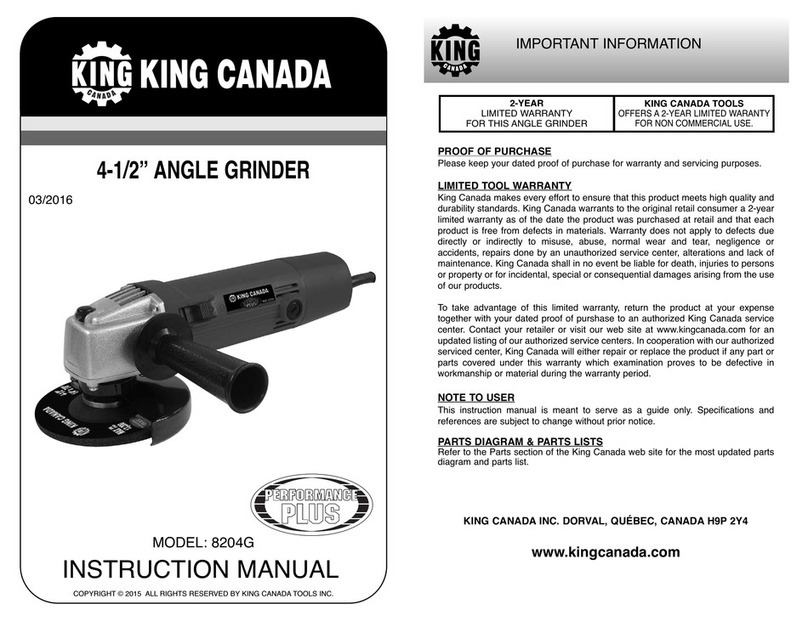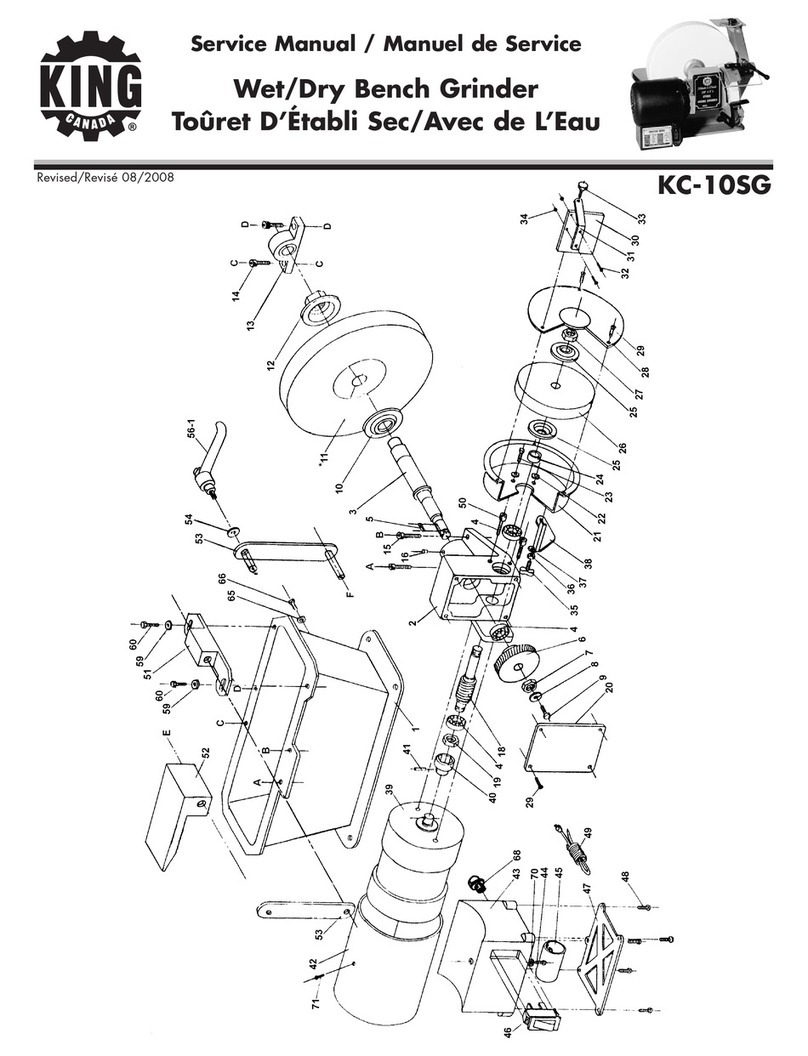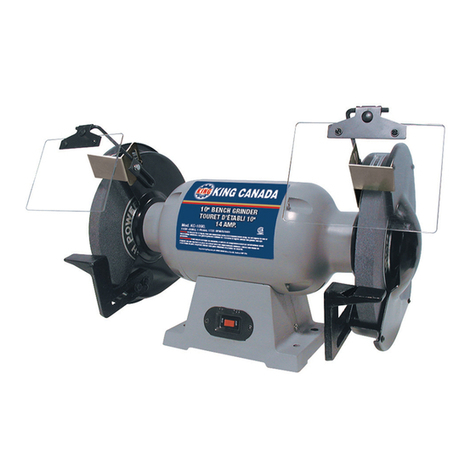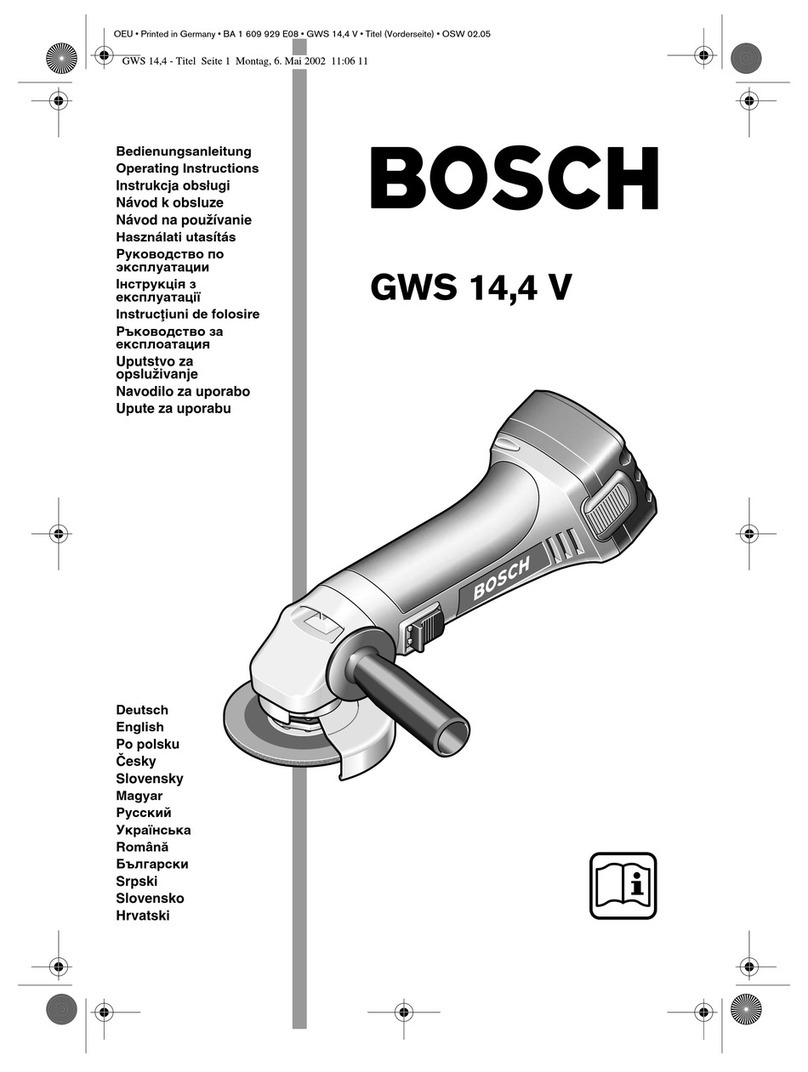Keep every disassembled part and replace parts with the
same ones: While disassembling the tool, care must be taken to
keep disassembled parts including insulating sheets and bushes,
etc. Damaged parts must be replaced with identical ones.
Alternative materials with features not as good as the original ones
or parts not in accordance with the original specifications must not
be used.
Matters needing attention for assembly:
1. Be sure that all the parts are assembled to their original positions
and especially do not leave out any insulation sheets or bushes.
2. Check and see if the direction of rotation of the protruded shaft
corresponds to that marked on the head enclosure (facing the
protruded shaft, you can see it rotating clockwise).
Pay attention to insulation resistance: After having used the tool for
along time or it is used in moist conditions, the tool should be
tested before use for the insulation resistance between the winding
and the casing with a 500V megger. Should the insulation
resistance be less than 7 megger, the winding must be cooled and
dried.
The tool must be well kept: The tool must be kept in an
environment where the air is dry, clean and free from corrosive
vapour and in a place out of the reach of children.
OPERATION INSTRUCTIONS
&MAINTENANCE ACCESSORIES
1. 2 grinding wheels (1/4” & 1/8”)
2. 5 sanding discs
3. 1 Rubber wheel
4. 1 Wire wheel
5. A key to dismantle and fit the grinding wheel
6. 2 position handle
7. Extra set of carbon brushes
SAFETY INSTRUCTIONS
Please read and understand instructions before plugging tool.
1. Keep work area clean: The work area should always be kept in
order and properly lit. It is dangerous to scatter things on the
ground.
2. Proper posture and suitable clothing: Concentrate on your work,
keep your footing and maintain your body balance. Work in
suitable clothing and always wear safety goggles. Do not wear
gloves, loose clothing, neckties or jewelry.
3. Keep unauthorized people away: Except for the people
concerned, keep unauthorized people away.
4. Use specified grinding wheel: The wheel used by the grinder
must be reinforced fibre resin, with a safety linear velocity not
lower than 80 meters per second. If the wheel has been kept for
more than one year, a rotational strength test should be
performed before use.
5. Pay attention to the wheel guard: This wheel guard is an
important part of the tool to ensure safety. Do not operate the tool
when the wheel guard has been dismantled. If a substitute is to
be used, it should be a steel plate or material with equal strength,
whereas brittle materials are strictly prohibited. The opening
angle of the guard should not be more than 180 degrees.
6. Places prohibiting the use of the tool: The tool must not be used
in specific environements such as environements with moisture,
heat, rain or snow or in a place with explosive gas or corrosive
vapours.
ACCESSORIES & SAFETY INSTRUCTIONS
